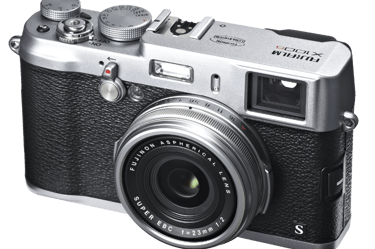The Adventures of a Fledgling Street Photographer: Facing Fears with a Fuji Mirrorless
It was a big day. No, scratch that—it was the day. After weeks of Googling, obsessively watching camera review videos, and reading every blog from so-called experts, Steve finally had it in his hands: the latest Fuji mirrorless camera. This wasn't just any camera; it was the one with enough megapixels to capture every pore on a fly’s back. According to Google, it was the best camera a fledgling street photographer could own.
Steve was ready—or at least he thought he was.
After much deliberation, he decided to venture into town for his first official street photography outing. He stepped onto the bus, his new Fuji dangling from his neck like a prized medallion, its pristine lens cap firmly in place. With every bump of the road, Steve felt his heart race.
“What if I don’t get any good shots?”
“What if people get angry at me for taking their photo?”
“What if...”
The bus screeched to a halt, jolting him from his worries. His stop. Time to face the music—or rather, the streets.
He gingerly stepped off the bus, squinting into the sunlight as though expecting a spotlight to hit him. In his mind, the whole town was watching him, wondering what the guy with the fancy camera was doing. Was he a professional? A spy? A lunatic? The possibilities were endless.
“Okay,” Steve muttered to himself. “No turning back now.”
He adjusted his camera strap and took a deep breath. But then came the ultimate dilemma: Now what? Where did he even start? The streets were full of life—bustling crowds, cyclists zipping past, pigeons doing... whatever pigeons do—but Steve felt paralysed.
“Maybe I’ll start small,” he thought, his eyes settling on a rather unremarkable lamppost.
He lifted his camera, feeling like a pro already, and snapped the picture. The satisfying click reassured him—until he checked the shot.
“Yikes,” he muttered, staring at what could only be described as a lamppost impersonating a blurry ghost. Well, that didn’t go as planned.
Determined, Steve decided to up his game. He could do better than a ghostly lamppost. He needed to face his fears. Photograph people! That’s what street photographers do, right? Capture life in its raw, spontaneous glory?
But suddenly, everywhere he looked, people seemed intimidating. There was the man sitting on the bench with a newspaper. The woman sipping coffee at an outdoor café. The teenage skateboarder doing tricks on the curb. Were they all silently daring him to take their photo? Would they yell at him? Throw their lattes in his face? Smash his beloved Fuji?
“Okay, deep breaths, Steve,” he whispered to himself like a mantra. “You’re a photographer. Act like it.”
Feeling bold, he slowly approached the man with the newspaper. His finger hovered over the shutter button. He was ready to capture the moment, to immortalise this perfect stranger in a single frame. But the man suddenly lowered his newspaper and locked eyes with Steve.
“What are you doing?” the man asked, his brow furrowing.
Steve panicked. “Uh, um, I—uh, I’m... testing my camera!” He awkwardly swung around, pretending to photograph a nearby building. It was a total cop-out, and he knew it.
“Nice save, Steve,” he grumbled to himself.
The rest of the afternoon continued much the same way. Steve tried to take photos of people, but every time he lifted his camera, someone would look at him, and he’d immediately abort the mission. Instead, he ended up taking pictures of buildings—dozens of buildings. Sure, they were nicely framed and all, but street photography wasn’t about structures. It was about people! Emotion! Life! And Steve was capturing none of that.
Then, just as Steve was about to call it a day and retreat to the safety of his apartment, something caught his eye—a group of breakdancers in the square. They were spinning, flipping, and moving with such energy and passion that Steve’s photographer instinct kicked in. Without overthinking it, he raised his camera and started snapping.
Click, click, click.
He was in the zone. The dancers were too absorbed in their performance to notice him, and Steve was able to capture moments of pure motion and emotion. He felt like he was finally getting somewhere.
That is, until one of the dancers spotted him. He froze, his heart leaping into his throat. Was this it? Was this where he got punched for taking someone's photo without permission?
But instead, the dancer gave him a thumbs-up. “Hey, man, nice camera!” he called out.
Steve blinked. “Uh, thanks!” he replied, caught off guard.
The dancer grinned, then struck a dramatic pose. “Take this one for your portfolio!”
Steve hesitated for only a moment before laughing and snapping the photo. As the other dancers joined in, striking ridiculous poses and egging him on, Steve found himself laughing along with them. The pressure he had felt all day suddenly evaporated. This was what street photography was all about—not just capturing the moment, but connecting with people, even in the most unexpected ways.
By the end of the day, Steve had dozens of photos of breakdancers, pigeons, and—yes—a few buildings for good measure. But most importantly, he had learned to relax and embrace the unpredictable nature of the streets. Not every shot had to be perfect. Not every person would get angry. Sometimes, the best moments came when he let go of his fears and just enjoyed the experience.
And that was his first lesson in street photography: it’s not just about the camera, the megapixels, or the perfect settings. It’s about being in the moment, facing your fears, and having a good laugh along the way.




Copyright © 2025 Peter Pickering. All Rights Reserved. All Wrongs Reversed.
🌐 peterpickering.com | 🎺 sessionsonthegreen.com | 💜 isaacbcole.com | ▶️ YouTube Channel | 🌿 life.peterpickering.com


